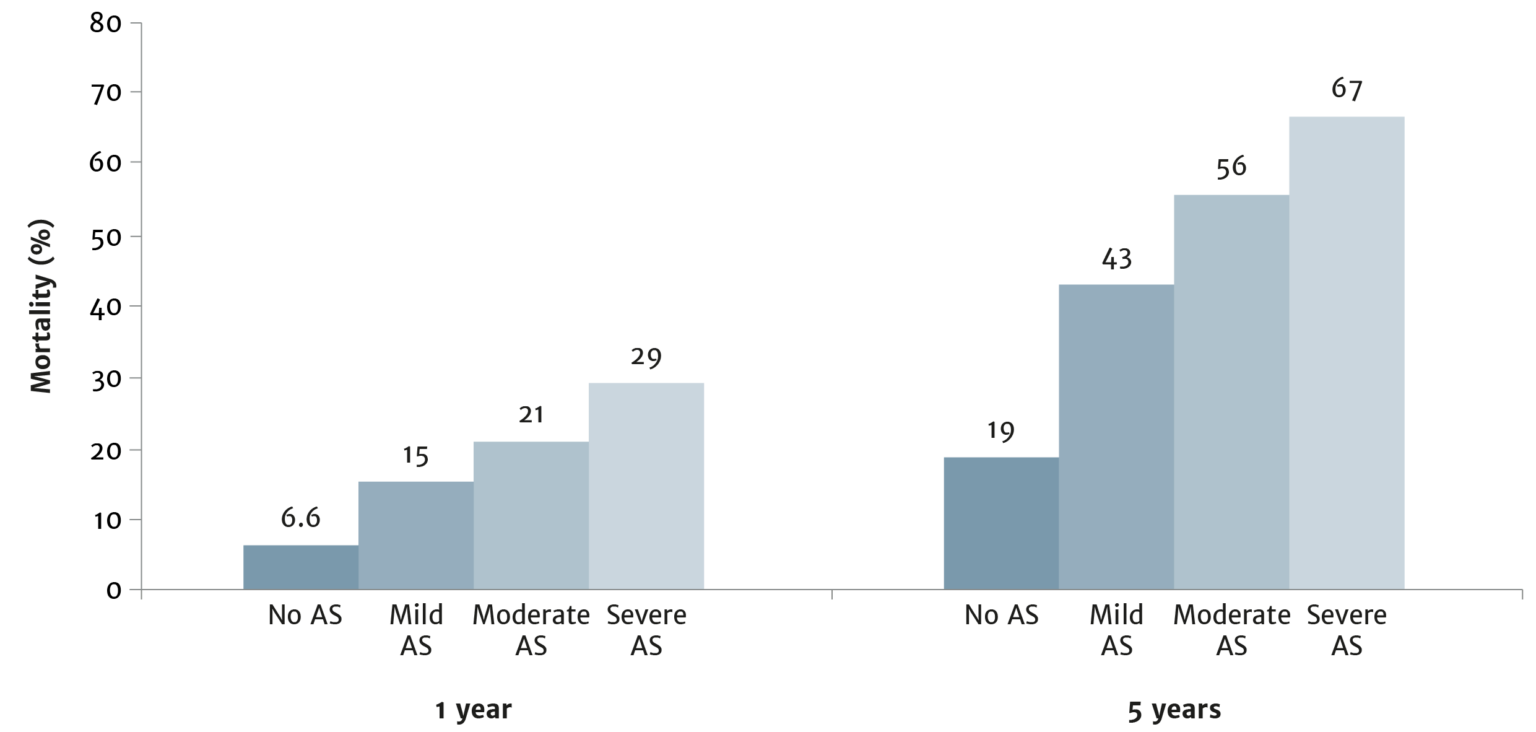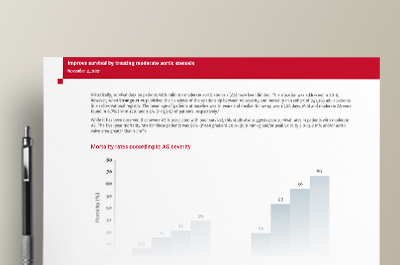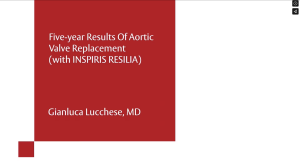Historically, survival data on patients with mild-to-moderate […]
Improve survival by treating moderate aortic stenosis
Historically, survival data on patients with mild-to-moderate aortic stenosis (AS) have been limited. This situation was addressed in 2019, however, when Strange et al. published their analysis of the relationship between AS severity and mortality in a cohort of 241,303 adult patients in an observational registry. The mean age of patients at baseline was 61 years and median follow up was 1,208 days. Mild and moderate AS were found in 6.7% (n=16,129) and 1.4% (n=3,315) of patients, respectively.1
While it has been observed that severe AS is associated with poor survival, this study also suggests poor survival rates in patients with moderate AS. The five-year mortality rate for these patients was 56% (mean gradient 20.0–39.9 mmHg and/or peak velocity 3.0–3.9 m/s and/or aortic valve area greater than 1 cm²).
Mortality rates according to AS severity

The importance of early referral, regular clinical and echocardiographic surveillance and early intervention were emphasised in the recent update to the ESC/EACTS Guidelines for the management of valvular heart disease.2 In addition to recommendations for an active collaboration among Heart Team members and the inclusion of the informed patient’s preferences when determining optimal treatment, specific recommendations relevant to patients with moderate AS include:2
- Regular clinical and echocardiographic surveillance where prognosis of patients with normal-flow,
low-gradient AS and preserved ejection fraction is similar to that of moderate AS - Earlier referral if patient’s symptoms advance or worsen
- Earlier intervention to be considered in asymptomatic patients with:
- severe AS and left ventricular ejection fraction (LVEF) <55% without another cause (IIa)
- severe AS and a sustained fall in blood pressure (>20 mmHg) during exercise testing (IIa)
- LVEF >55% and a normal exercise test if the procedural risk is low and one of the following is present: very severe AS, severe valve calcification plus Vmax progression >0.3 m/s/year, or markedly elevated B-type natriuretic peptide levels without other explanation is present (IIa)2
The ESC/EACTS guidelines also support consideration of earlier intervention in select patients with asymptomatic aortic regurgitation.2
References
1. Strange G, Stewart S, Celermajer D et al. Poor long-term survival in patients with moderate aortic stenosis. JACC. 2019; 74: 1851–63.
2. Vahanian A, Beyersdorf F, Praz F et al. 2021 ESC/EACTS Guidelines for the management of valvular heart disease. Eur Heart J. 2021.
Edwards, Edwards Lifesciences, and the stylized E logo are trademarks or service marks of Edwards Lifesciences Corporation or its affiliates. All other trademarks are the property of their respective owners.
© 2021 Edwards Lifesciences Corporation. All rights reserved. PP–EU-3061 v1.0
Edwards Lifesciences • Route de l’Etraz 70, 1260 Nyon, Switzerland • edwards.com
Edwards Masters App
Learn anywhere


now fully customized to your needs and interests. Your educational platform
in heart valve surgery.





 ~5m
~5m










